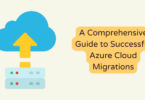
IT
In today’s business world, network performance is critical in ensuring smooth and efficient communication between devices and systems. Whether for personal use or business operations, a well-optimized network can significantly enhance productivity, reduce downtime, and improve overall user experience. However, achieving optimal network performance can be a complex attempt, requiring a combination of technical expertise and strategic decision-making. Consult with IT Support Cambridge experts to enhance your company’s network performance.
In this article, we will explore some top tips to improve your company’s network performance.
8 Tips to Improve Your Company’s Network Performance
Reconfigure Your Network Equipment
Properly configuring devices within your network is crucial to avoid communication issues, routing problems, and increased latency. Ensuring every device is correctly installed and upgraded can prevent these issues and keep your network running smoothly.
To ensure optimal network performance, your firm must confirm any changes made to network hardware during reconfiguration promptly. Failure to do so could potentially harm your network’s overall performance.
Utilize Network Monitoring
Utilizing network monitoring tools is one of the best ways to improve your company’s network performance. By constantly monitoring your network, you can identify any issues or bottlenecks affecting performance and take corrective action before they become major problems. Network monitoring tools can also help you recognize trends in usage patterns, which can be helpful for capacity planning and resource allocation.
Additionally, many modern network monitoring tools include advanced features like machine learning and predictive analytics, which can help you proactively address potential issues before they arise. Incorporating network monitoring into your IT strategy is critical to optimizing your company’s network performance.
Provide a Guest Network
As more users connect to a network, the resulting increase in traffic can significantly impact network performance. This is particularly true for enterprise networks that accommodate hundreds of guest users, as the demand for bandwidth can cause noticeable slowdowns. With guests competing for bandwidth that your business needs for critical tasks, optimizing network performance is essential to ensure that your operations remain efficient and effective.
Setting up a dedicated network for your guests can significantly boost your network’s performance while minimizing security risks. With a separate network, your guests can enjoy seamless internet access while your team can continue to work at top speed without any interruptions or security concerns.
Use Virtual Local Area Networks (VLANs)
VLANs are a powerful tool to streamline your network infrastructure. You can easily prioritize critical areas and confine broadcast domains by segmenting your network resources. This results in reduced broadcast traffic and easier administration. Plus, with VLANs, you can separate your network without the need to rewire your entire office, making it a cost-effective solution to network segmentation.
VLANs are essential for improving network security. By segmenting the network, other sections can remain secure if one part is attacked or compromised. Even if malware infects a particular area, it won’t affect the functionality of the rest of the network. Additionally, network components can be split and tasks prioritized to boost performance optimization.
Keep Your Network Up to Date
As your business expands, so do the demands on your network. With each new application, user, and location added to your network, your infrastructure will take on additional responsibilities. This is why the network infrastructure that sufficed for a company of ten employees is insufficient to support a company of 100 or more. While it’s essential to research and evaluate potential solutions, it’s worth noting that many networks eventually wear out and require replacement.
Upgrading to a new wired connection can address many of your network issues if you still rely on an outdated cabled internet connection. Regularly updating your software to the latest versions can greatly improve your network’s overall performance.
Monitor for Bottlenecks
Effective network monitoring is an essential component of any organization’s infrastructure. You can identify potential bottlenecks or traffic jams that could impact performance and productivity by monitoring your network. For instance, system backups often require significant system resources, which can slow down other network activities.
In some cases, backup scheduling may not be accurate, resulting in backups running into the workday or taking longer than expected. With Remote Monitoring and Maintenance (RMM) services, potential congestion sources can be detected, and IT staff can develop more effective solutions.
Compress Data and Network Traffic
One way to improve your company’s network performance is by compressing data and reducing network traffic. This can be achieved through various methods, such as using compression tools or optimizing your website’s files.
By reducing the size of the data being transmitted, you can improve the speed and efficiency of your network, which can lead to faster load times and smoother browsing experiences for your employees and customers. Additionally, reducing network traffic can help prevent congestion and minimize the risk of downtime or connection issues.
Update Software and Firmware
As technology advances, keeping the software up-to-date can be challenging. The compatibility between new programs and old machines, or vice versa, can be unpredictable. This often results in compatibility issues, making it difficult for programs to function optimally.
Are you using an outdated software system simply because it’s what you’ve always used? It’s time to consider upgrading to a more modern and compatible technology.
Conclusion
Improving network performance is a continuous endeavor that requires careful attention and proactive measures. By implementing the top tips discussed in this article, organizations can significantly enhance their network’s efficiency, reliability, and security. Investing in robust network infrastructure, optimizing bandwidth management, implementing strong security measures, and leveraging optimization techniques create a high-performing network environment. Organizations can ensure seamless connectivity, maximize productivity, and enable the smooth operation of digital systems by prioritizing network performance and staying ahead of emerging technologies and best practices. To enhance your company’s network performance, reach out to Managed IT Services Boston experts.






